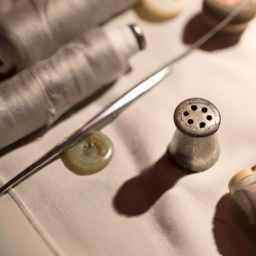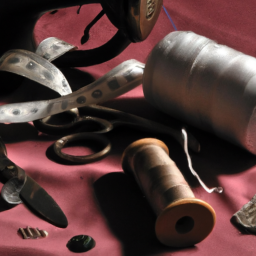
History of Sewing in India

Traditional Indian sewing
India has a rich history when it comes to sewing and textiles. From ancient times, Indian craftsmen have excelled in the art of needlework and embroidery, creating stunning garments and textiles that reflect the country’s diverse cultural heritage.
Sewing in India dates back thousands of years, with evidence of intricate stitching and embellishments found in archaeological remains. The ancient Indus Valley Civilization, which thrived around 2500 BCE, had a well-established textile industry where people produced woven fabrics and practiced various sewing techniques.
Over the centuries, sewing in India evolved in different regions, each showcasing its distinct style and craftsmanship. From the vibrant, hand-stitched Phulkari embroidery of Punjab to the intricate Chikankari work of Lucknow, Indian sewing is a testament to the country’s artistic diversity.
One of the most significant contributions of Indian sewing is the art of saree draping. The traditional saree, a long piece of cloth intricately woven with stunning patterns and designs, is draped around the body to create an elegant and graceful attire. The way a saree is draped varies from region to region, and the draping styles hold cultural and historical significance.
“Indian sewing techniques have captivated people around the world, inspiring designers and fashion enthusiasts with their intricate designs and craftsmanship.” - Fashion historian, Dr. Ritu Mehra
The Mughal era in India marked a significant influence on sewing techniques. Intricate hand embroidery, such as zardozi and aari work, gained popularity during this period. These techniques involved using gold and silver threads, precious stones, and beads to embellish fabrics, creating luxurious garments fit for royalty.
In recent times, Indian sewing has not only preserved its traditions but also adapted to modern fashion. Indian designers have seamlessly blended traditional techniques with contemporary styles, creating a fusion of the old and the new. These creations have been showcased on international runways, earning recognition and appreciation worldwide.

Modern Indian fashion
Today, sewing remains an integral part of Indian culture, with many families passing down their sewing skills from one generation to the next. Artisans and craftsmen continue to keep the traditions alive by creating exquisite garments and textiles using various intricate techniques.
Indian sewing techniques have captivated people around the world, inspiring designers and fashion enthusiasts with their intricate designs and craftsmanship. They serve as a reminder of the rich cultural heritage and artistic legacy that India holds.
Whether it’s the timeless elegance of a hand-embroidered saree or the intricate details of a designer’s ensemble, the history of sewing in India is a tribute to the skill, creativity, and artistry of its people.




